 Copyright 2012 by McGraw-Hill Education. All rights reserved. Except as permitted under the United States Copyright Act of 1976, no part of this publication may be reproduced or distributed in any form or by any means, or stored in a database or retrieval system, without the prior written permission of the publisher. ISBN: 978-0-07-179829-7
Copyright 2012 by McGraw-Hill Education. All rights reserved. Except as permitted under the United States Copyright Act of 1976, no part of this publication may be reproduced or distributed in any form or by any means, or stored in a database or retrieval system, without the prior written permission of the publisher. ISBN: 978-0-07-179829-7
MHID: 0-07-179829-3 The material in this eBook also appears in the print version of this title: ISBN: 978-0-07-177321-8, MHID: 0-07-177321-5. eBook conversion by codeMantra
version 2.0 All trademarks are trademarks of their respective owners. Rather than put a trademark symbol after every occurrence of a trademarked name, we use names in an editorial fashion only, and to the benefit of the trademark owner, with no intention of infringement of the trademark.
Where such designations appear in this book, they have been printed with initial caps. McGraw-Hill Education eBooks are available at special quantity discounts to use as premiums and sales promotions, or for use in corporate training programs. To contact a representative please visit the Contact Us page at www.mhprofessional.com. TERMS OF USE This is a copyrighted work and McGraw-Hill Education and its licensors reserve all rights in and to the work. Use of this work is subject to these terms. Except as permitted under the Copyright Act of 1976 and the right to store and retrieve one copy of the work, you may not decompile, disassemble, reverse engineer, reproduce, modify, create derivative works based upon, transmit, distribute, disseminate, sell, publish or sublicense the work or any part of it without McGraw-Hill Educations prior consent.
You may use the work for your own noncommercial and personal use; any other use of the work is strictly prohibited. Your right to use the work may be terminated if you fail to comply with these terms. THE WORK IS PROVIDED AS IS. McGRAW-HILL EDUCATION AND ITS LICENSORS MAKE NO GUARANTEES OR WARRANTIES AS TO THE ACCURACY, ADEQUACY OR COMPLETENESS OF OR RESULTS TO BE OBTAINED FROM USING THE WORK, INCLUDING ANY INFORMATION THAT CAN BE ACCESSED THROUGH THE WORK VIA HYPERLINK OR OTHERWISE, AND EXPRESSLY DISCLAIM ANY WARRANTY, EXPRESS OR IMPLIED, INCLUDING BUT NOT LIMITED TO IMPLIED WARRANTIES OF MERCHANTABILITY OR FITNESS FOR A PARTICULAR PURPOSE. McGraw-Hill Education and its licensors do not warrant or guarantee that the functions contained in the work will meet your requirements or that its operation will be uninterrupted or error free. Neither McGraw-Hill Education nor its licensors shall be liable to you or anyone else for any inaccuracy, error or omission, regardless of cause, in the work or for any damages resulting therefrom.
McGraw-Hill Education has no responsibility for the content of any information accessed through the work. Under no circumstances shall McGraw-Hill Education and/or its licensors be liable for any indirect, incidental, special, punitive, consequential or similar damages that result from the use of or inability to use the work, even if any of them has been advised of the possibility of such damages. This limitation of liability shall apply to any claim or cause whatsoever whether such claim or cause arises in contract, tort or otherwise.
Contents
Foreword
It has been seven years since we first wrote
The Organized Teacher. From the time it was published, we have used this book in countless classroom management courses, national and international conferences, and school district workshops and have heard directly from hundreds of teachers in the field who have used content from this book in their own classrooms. We are excited to have incorporated their ideas and suggestions into this new edition.
Many of the changes you will find include everything from new rewards, updated certificates, current teacher and student websites, a refreshed childrens literature bibliography, updated technology ideas, and a user-friendly download that includes all the templates found in the book. The second edition of The Organized Teacher is an improved version of the first, which is more aligned to the twenty-first-century classroom. Many of the changes come directly from the thoughts and needs of current classroom teachers in the public and private sector in rural, urban, and suburban areas. There are a variety of alterations to be found in the illustrations, accessibility to teacher resources, and updated checklists and user-friendly templates stemming from the voices of reflective practitioners. Teachers are inundated and overwhelmed with standards-based curriculum, high stakes testing, the pressures and responsibilities of accountability issues, and the everyday tasks of teaching; its a wonder that teachers are as committed and determined to make a difference as they are. This is no truer than when walking into the classroom of Mr.
Steve Springer or Mr. Brandy Alexander in Los Angeles, CA. On any given day, you can walk into their classrooms and observe a variety of activities from center rotations, felt storyboards, students helping one another, stories being read on the rug, the teachers aide reading with small groups, hands-on projects taking place, and the teacher working one-on-one with students. In addition to the very busy goings-on of their rooms, bulletin boards are filled with student work samples scored with accompanying rubrics, art projects cover tabletops and walls, and computer games and student technology projects are being worked on throughout the day. In January 2003, I had the pleasure of supervising student teachers from California State University, Los Angeles, during their Directed Teaching portion of the credential program. Two of my student teachers were placed under the guidance of Mr.
Springer and Mr. Alexander. My first stop was Mr. Springers classroom. Upon entrance, one could see that the children owned the room. The space was personalized with pictures of those residing in this class while their newest narrative writing was securely in place, the children were talking to one another, and learning was obviously occurring.
English learners made up a large part of this class, and they were tended to in every lesson while advanced learners and those with special needs were also accommodated. Steves attention to his audience is what makes much of the planning and incentive ideas in this book as strong as they are. I couldnt have asked for a better place in which to watch the professional growth of my student teacher. The next stop was Mr. Alexanders room. I felt as though I went from one ideal venue to another.
It was unbelievable to me that my student teachers were being placed in such extraordinarily positive circumstances during a time, which is often scary and unfamiliar to these teacher candidates. Seeing that technology was a key element in Mr. Alexanders class and that electronic (academic) games, group discussions, and student input were all honored, only solidified the fact that our teacher candidates were in good hands. Mr. Springer and Mr. Alexander offered classrooms where not only the students thrive, but so did my student teachers that were placed under their guidance for eleven weeks.
Toward the end of the winter quarter, as the student teachers finished their final observations, I noticed a three-ring binder full of unique ideas from lesson planning, to bulletin board ideas, to classroom discipline procedures, assessment concepts, portfolio ideas, and the like. When questioned, my student teachers admitted that Mr. Springer and Mr. Alexander provided them with these materials. Immediately, I asked Mr. Springer and Mr.
Alexander why they hadnt published such materials for all new and existing teachers. From that time on, the preparation of this book was in motion. The three of us worked diligently for several months in order to pull together the makings of a practical, no-nonsense book full of blackline masters and usable resources. It is without question that Steve Springer and Brandy Alexander are of the group of dedicated teachers who show up each day with a smile on their faces, have a classroom prepared for all learners, and materials available for each child to be successful. It is with great honor that I had the opportunity to be a part of this amazing book in which new and existing teachers will benefit from our years of experience. Through this experience, several other books in the The Organized Teacher series have emerged.
Next page


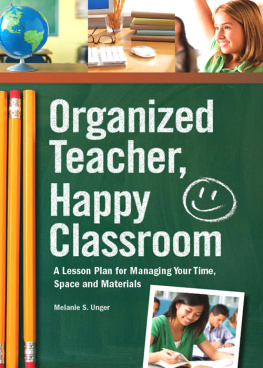



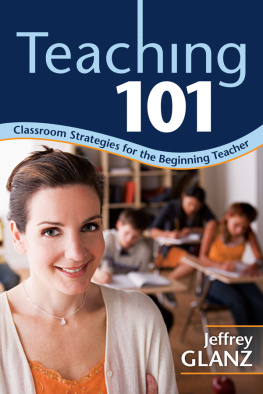
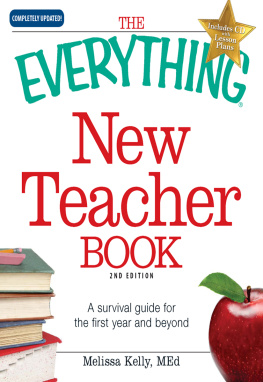
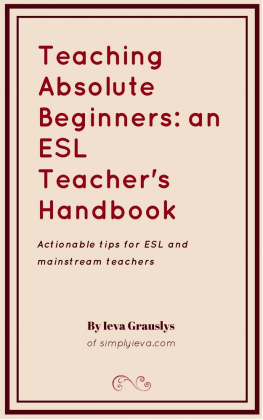
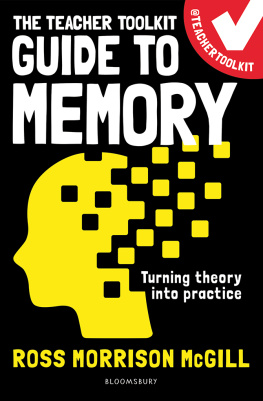
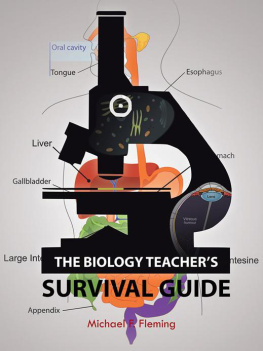
 Copyright 2012 by McGraw-Hill Education. All rights reserved. Except as permitted under the United States Copyright Act of 1976, no part of this publication may be reproduced or distributed in any form or by any means, or stored in a database or retrieval system, without the prior written permission of the publisher. ISBN: 978-0-07-179829-7
Copyright 2012 by McGraw-Hill Education. All rights reserved. Except as permitted under the United States Copyright Act of 1976, no part of this publication may be reproduced or distributed in any form or by any means, or stored in a database or retrieval system, without the prior written permission of the publisher. ISBN: 978-0-07-179829-7